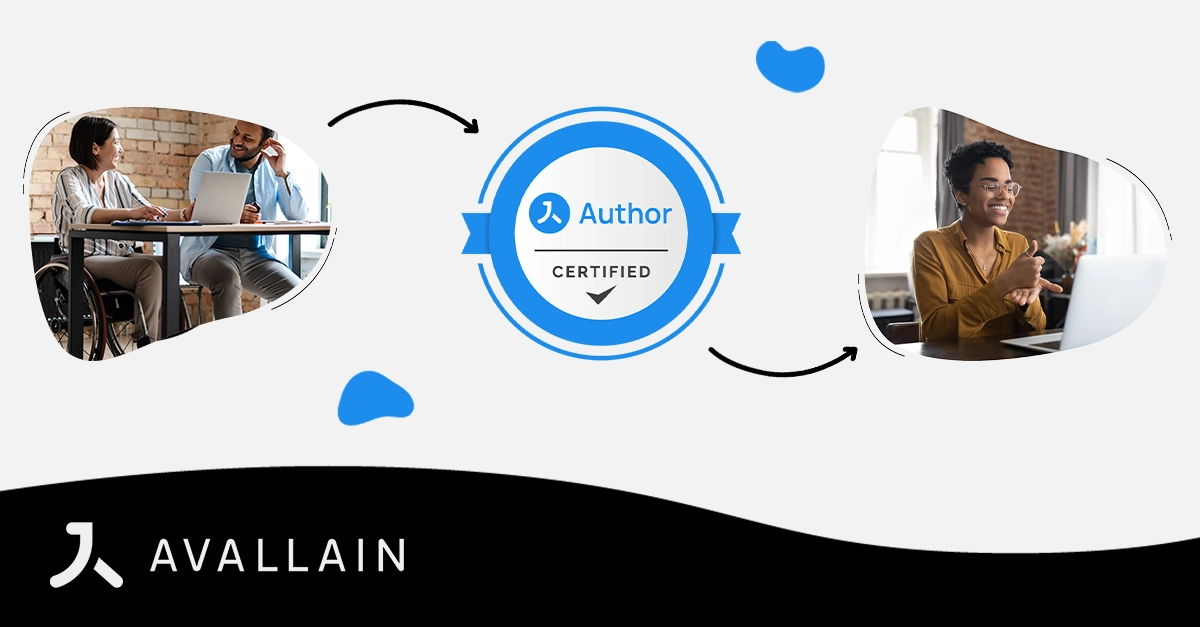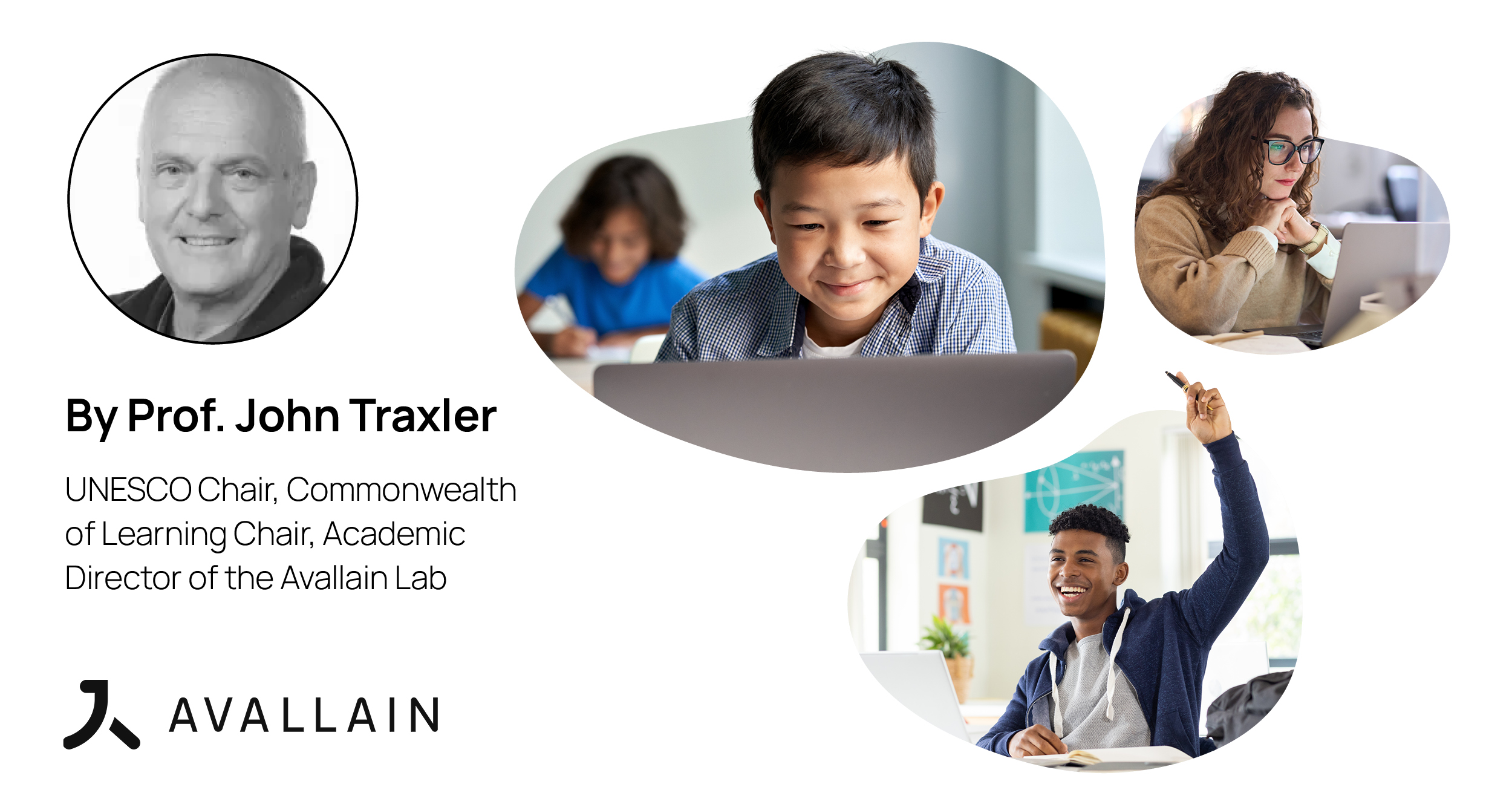The Avallain Author Training and Certification Programme now contains a dedicated accessibility module, thereby extending its coverage to accessibility features within Avallain Author. It equips content creators with the knowledge to design truly inclusive learning materials for all students.
Accessible by Design: How the Avallain Author Training and Certification’s Accessibility Module Prepares Content Creators for the EAA Era
St. Gallen, July 2025 – The Avallain Author Training & Certification Programme is designed to equip publishing professionals, content service providers and individual authors with the skills to make the most of Avallain Author. A key component of this programme is the Accessibility module, a practical course that supports the creation of inclusive digital content aligned with international standards.
As the European Accessibility Act (EAA) comes into effect across the EU, education providers are navigating new compliance requirements and a broader shift toward equitable learning. This module enables content creators to respond confidently, building accessible materials that meet legal standards and support meaningful participation for all learners. It forms part of Avallain’s ongoing commitment to accessibility in digital education, grounded in our Inclusive Design Approach, as detailed in our article on how we design for accessibility.
Applying Built-In Accessibility with Confidence
The module guides participants through Avallain Author’s accessibility features and how to implement them in day-to-day workflows. These include:
- Keyboard and screen reader compatibility, allowing navigation without a mouse.
- AI-generated alt text for all images and illustrations.
- AI-powered subtitles and transcripts for multimedia content.
- Customisable layouts, including high contrast options and scalable fonts.
- Accessibility controls flag non-compliant assets during content development.
By the end of the module, certified users can effectively apply these features and ensure that every piece of content aligns with WCAG 2.2 AA and is ready for any compliance audit.
Mercury Design Pack: Ensuring Accessible Interactivity
Accessibility extends beyond layout and media to how learners interact with digital content. The Mercury Design Pack, which underpins Avallain Author Activity Types, plays a central role in ensuring that interactivity is inclusive by design.
The Accessibility module of the Avallain Author Training & Certification Programme teaches participants how to effectively use components within the Mercury Design Pack to deliver accessible, standards-aligned learning activities across a wide range of use cases.
Its accessibility-focused features include:
- WCAG 2.2 AA compliance by default, covering everything from contrast ratios to focus indicators.
- Keyboard-accessible components, enabling full navigation across interactive elements without a mouse.
- Readable, scalable typography, optimised for users with dyslexia and other reading differences.
- Consistent UX behaviours, reducing cognitive load and helping learners feel confident in navigating content.
Content creators can focus on the learning experience rather than retrofitting or troubleshooting because dozens of Activity Types built with Mercury have already been independently audited and validated for accessibility.
By mastering how to implement accessibility features in Mercury through the training module, authors, publishers and content service providers can deliver engaging and compliant interactive digital learning without extra production overhead.
Supporting Scalable, Inclusive Content Creation
The Accessibility module is designed to support content professionals in real-world production contexts:
- Publishers can streamline accessibility across their catalogues and meet audit requirements efficiently.
- Content service providers and agencies can deliver high-standard learning materials for clients with diverse compliance needs.
- Individual authors gain structured guidance and official certification that demonstrates expertise in inclusive content development.
This module allows teams and individuals alike to integrate accessibility from the start, reducing rework, improving quality and ensuring every learner is supported.
AI for Accessibility: Research-Led Design
The module also reflects ongoing developments led by the Avallain Lab, which explores how AI can actively support inclusion in content creation. It is further aligned with Avallain Intelligence, our strategy for the ethical and responsible integration of AI in education.
This work includes:
- Evaluating and refining features in collaboration with accessibility experts such as the Digital Accessibility Centre.
- Integrating accessibility standards into development from the outset.
- Enhancing authoring workflows with AI tools that generate alt text, subtitles and transcripts for multimedia assets.
This approach makes it easier for content creators to deliver compliant, high-quality learning materials with Avallain Author without needing external tools or specialised knowledge.
Responding to the EAA with Practical Tools and Training
The EAA sets a new bar for digital inclusion, and with it, a need for clear, actionable support for those creating educational content. The Accessibility module complements the Avallain Author Training and Certification Programme with resources to prepare for compliance while improving learner access and equity.
The module helps content creators to understand how to simplify accessibility work through guided training, built-in tools and reusable, validated components.
Join a Growing Community of Certified Teams and Individuals
Explore the Avallain Author Training and Certification Programme and join publishers, content service agencies and individual professionals who have already gained certification in using Avallain Author to create powerful, professional and accessible digital learning content.
About Avallain
At Avallain, we are on a mission to reshape the future of education through technology. We create customisable digital education solutions that empower educators and engage learners around the world. With a focus on accessibility and user-centred design, powered by AI and cutting-edge technology, we strive to make education engaging, effective and inclusive.
Find out more at avallain.com
_
Contact:
Daniel Seuling
VP Client Relations & Marketing



